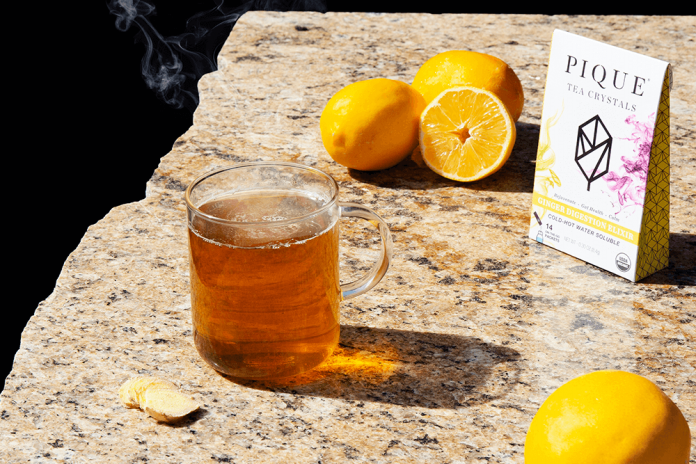Hint: it goes beyond fat and sugar.
“Avoid processed foods.” We hear it all the time.
On some level, we all know processed foods are bad. But… why??
Humans have processed food, to some extent, for thousands of years–grinding, cooking, drying. But ultra-processing, well, that’s a relatively new phenomenon.
Read on to learn why ultra-processing is ultra-harmful. To us, and to our invisible (but oh-so-essential) bacterial residents.
What are processed foods?
Processed foods have been altered from their original, found-in-nature form. They have been chopped, ground, cooked, dried, filtered, frozen, canned, or some combination of these.
Processing isn’t inherently bad. It can make foods taste better, extend their shelf life, and make them more convenient for our busy, modern lives.
Take peanut butter, for example. If you grind peanuts, you get peanut butter. With a high protein content and health-boosting vitamins and minerals like magnesium and zinc, peanut butter is generally considered a healthy processed food.
But what about peanut butter with added sugar, refined oil, and salt? Or Nutter Butter cookies that are “made with real peanut butter” (along with refined flour, high fructose corn syrup, hydrogenated oils, and artificial flavors, of course). Now we’re getting into the realm of ultra-processed foods…
What are ultra-processed foods?
Ultra-processed foods, according to the NOVA Food Classification System, are industrial formulations made entirely or mostly from substances derived from foods or synthesized in laboratories. They contain little to no intact food and several food additives (1).
Calling these factory formulations “foods” is a stretch. “Frankenfoods” may be more appropriate.
And the scary part? A national study revealed that ultra-processed foods make up almost 60% of the total calories consumed in the U.S (2). That means over half of the typical American diet is made up of frankenfoods!
Of course, with grocery stores containing 40,000 more items than they did in the 1990’s, “avoiding processed foods” is easier said than done (3).
These are common ultra-processed foods that fill our grocery store shelves, and carts:
- Breakfast cereals and bars
- Frozen pizzas, TV dinners, instant soups
- Pre-prepared meats (hot dogs, chicken nuggets, fish sticks, etc)
- Pastas and packaged breads
- Cookies, pastries, cakes, candies, ice cream
- Packaged snacks (pretzels, cheese crackers/puffs, fruit snacks, etc.)
- Soda, sports drinks, and energy drinks
- Flavored yogurts
Yep, basically everything affordable, convenient, and ultra-tasty. Which is probably why so many frankenfoods have become dietary “staples.”
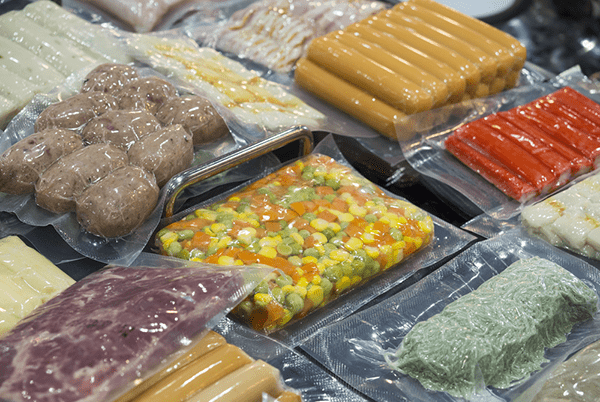
Why exactly are they bad for us?
A recent study polled nearly 20,000 people for up to 10 years and found that consuming ultra-processed foods (more than four servings daily) was associated with a 62% increase in mortality. And for each additional serving of ultra-processed food, this rate went up 18% (4).
Yikes.
It all comes down to this: Frankenfoods are formulated for profit, not for health.
They are engineered to taste delicious, cost as little as possible, last forever on shelves, and leave us wanting (and buying) more. This does not a health food make.
Low Nutrient, High Calorie
What happens when we eat things that are high in calories but low in nutrients? The phenomenon of a society that is both overfed and undernourished.
The more a food is processed, the less nutritious it becomes. The end product is something that is disproportionately high in sugar, fat, and salt, and low in healthful fiber and micronutrients.
In fact, 90% of the added-sugars consumed in the US come from ultra-processed foods (5). Sugar adds calories, but no nutrition whatsoever. Not to mention the excessive sodium and inflammatory, disease-fueling hydrogenated oils and trans fats that are also added, in excess, to these foods.
The nutrition profile alone (or lack thereof) makes ultra-processed foods an obvious threat to our health. Without enough essential vitamins and minerals, our bodies can’t function properly. But there’s more….
Frankenfoods actually alter our biochemistry in dangerous ways.
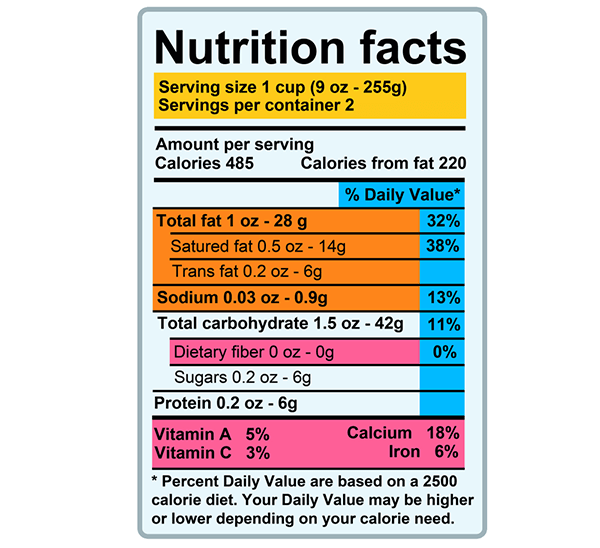
Designed for Overeating
For the primal human, foods that were sweet, fatty, or salty were hard to come by, and also good for survival. Thanks to evolution, these foods trigger a hormonal response that activates the “reward center” in our brains. This makes us feel good and signals us to eat more.
Unfortunately, food science has evolved faster than human biology.
The frankenfoods we eat today are engineered with unhealthy levels of “reward center” ingredients. They completely overpower our bodies’ ability to regulate hunger and weight. One study showed that eating ultra-processed foods for just two weeks caused overeating and weight gain (6).
This “reward center” response actually leads to overconsumption and addiction much the same way that addictive drugs do (7). So we become addicted to ultra-processed foods, thereby continuing to purchasing and over-consume them.
Good for profit-driven food manufacturers, bad for us.
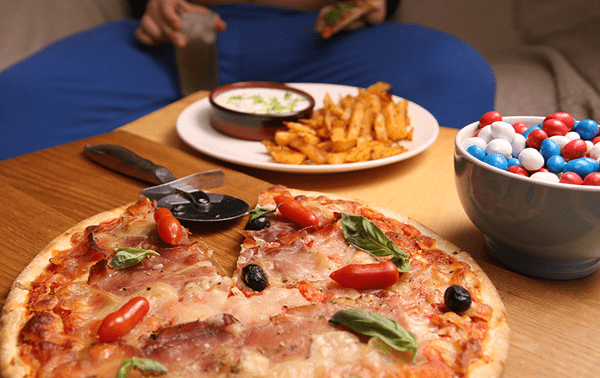
Harmful Additives
The list of FDA-approved food additives is as long as it is unpronounceable. Any number of these can be found in processed foods to enhance their flavor, extend their shelf life, or alter their texture or appearance.
Many additives commonly found in ultra-processed foods are associated with negative health effects:
- Acrylamide: a chemical produced during industrial processing and high-temperature cooking. Shown to cause several types of cancers in animals. (8)
- Bisphenol A (BPA): used in plastics and inner coatings of cans and jars. Shown to interact with estrogen and contribute to several endocrine disorders: infertility, early puberty, breast and prostate cancer, and metabolic disorders like polycystic ovary syndrome (PCOS). (9)
- Emulsifiers (polysorbate 80, lecithin, carrageenan, polyglycerols, and xanthan and other “gums”): used for thickening and preventing separation of oil and water. Affect the gut microbiome and cause intestinal inflammation. (10)
- Monosodium Glutamate: flavor enhancer. May contribute to obesity and metabolic syndrome. (11)
- Non Caloric artificial sweeteners: associated with long term weight gain, atherosclerosis, and insulin resistance. (12)
What’s worse, many additives used in the U.S. are banned or severely restricted in Europe due to evidence that they can cause cancer or other serious health concerns:
- Potassium bromate and azodicarbonamide (ADA): added to flour, shown to cause cancer in lab animals. (13)
- BHA and BHT: preservatives and flavor enhancers, likely carcinogens. (14)
- Brominated vegetable oil (BVO): adds citrus flavor to sports drinks and soft drinks, can potentially affect memory, skin, and nerves. (15)
- Artificial food dyes (Red 40 and Yellow 5 and 6): added to candy, cereal, and condiments, could cause “an adverse effect on activity and attention in children.” (16)
- Ractopamine and bovine growth hormone (RBGH): administered to farm animals, linked to breast, prostate and colon cancer. (17)
Food engineering is relatively new in the grand scheme of human dietary evolution, so we really don’t know the long-term safety of most additives.
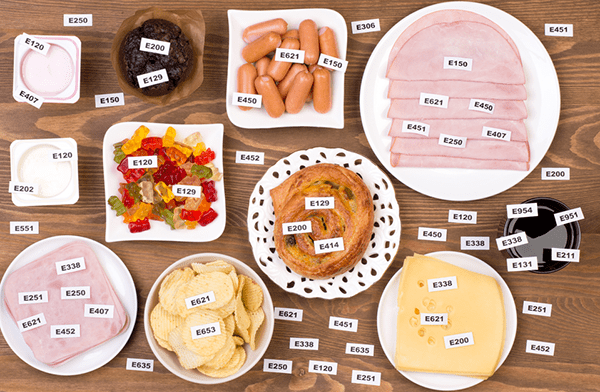
Intestinal Imbalance
You’ve heard of the microbiome?
Well, it turns out, those trillions of bacteria that live in our digestive tracts are actually pretty essential to our health. And they really don’t like ultra-processed foods.
The formulation of ultra-processed foods–high in sugar, low in fiber, and full of additives–delivers a one-two-three punch to the microbiome, messing up the delicate balance of bacterial populations.
Sugar
Most ultra-processed foods are high in added sugars (like refined sugar or high fructose corn syrup) and made with refined flours that convert straight to sugar in the body. These simple sugars affect the balance of the microbiome: increasing some bacteria populations while decreasing others. (18)
Imbalanced microbiomes are associated with metabolic disorders like obesity and diabetes. (19)
And the artificial sweeteners often used in place of sugar may be just as harmful. Studies on rodents have shown that artificial sweeteners also alter the composition of microbes, leading to impaired glucose tolerance and inflammation. (20)
Fiber
Fiber-rich foods, like whole grains, are prebiotics–meaning they feed the microbiome and help maintain its diversity. But the pulverized flours and food derivatives in ultra-processed foods retain little to no dietary fiber.
One study showed specific strains of microbes that only flourish with the consumption of complex (high-fiber) carbs. These important microbes are undetectable, possibly even extinct, in populations that consume an industrialized (low-fiber) diet. (21)
So basically, a low fiber diet = microbe starvation.
Additives
Remember those emulsifiers we mentioned earlier? These additives, like polysorbate 80, directly alter the species composition of the microbiome, leading to intestinal inflammation. (22)
Gut inflammation contributes to many chronic diseases, including inflammatory bowel disease, cardiovascular disease, and cancer. (23)
All this inflammation and microbial imbalance may also interfere with the hunger and weight management processes we mentioned before. So, an unhealthy microbiome can further drive food cravings and overeating. (24)
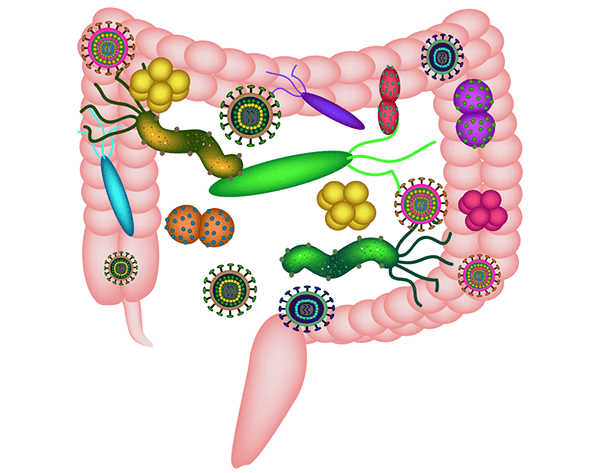
Tips to eat less processed food
In a perfect world, we would only eat fresh, whole foods.
In the real world, we are limited by time, money, and availability. And let’s face it, processed foods are fast, affordable, and everywhere.
So how can we prioritize our health without breaking the bank or sacrificing sleep to spend hours in the kitchen? Here are a few tips:
1. Plan ahead.
A little preparation can go a long way. If time constraints often drive you toward processed breakfasts or snacks, try portioning out some healthier grab-and-go options on the weekends: Hard-boiled eggs, chopped veggies with hummus, sliced fruit with nut butter, mixed nuts, olives.
2. DIY frozen dinners.
Batch cooking meals and freezing them in individual servings is a great way to have dinner in an instant during the week. Homemade soups and stir-fries freeze well and are way more nutritious than TV dinners or frozen pizzas.
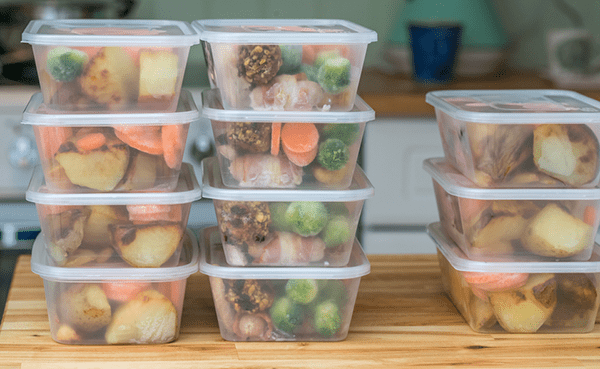
3. Wash it down with water.
Sweetened beverages are the biggest source of added sugars, and perhaps the simplest ultra-processed food to eliminate. Just replace every drink–sweetened iced teas, energy drinks, soda, fruit juice–with water and watch your health and energy transform! If you get bored with water, try flavored carbonated waters with no added sweeteners.
4. Unprocess your grains.
Most meals can go from ultra-processed to minimally (or un-) processed with just one simple swap: the grain. Choose brown rice instead of white rice or pasta, and try steel cut oats instead of instant oats.
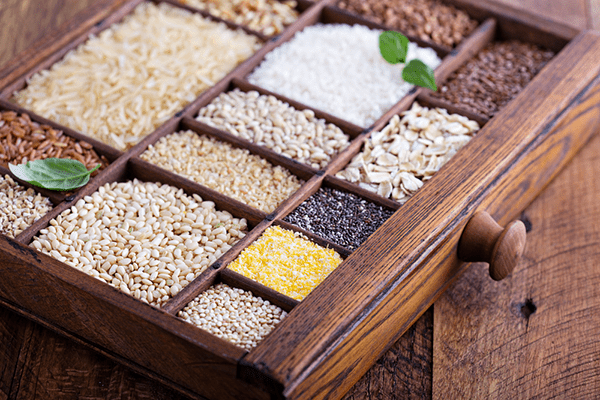
5. Don’t be afraid to fast!
If you’re traveling or in a circumstance where ultra-processed food is your only option, you may want to try skipping the meal entirely. Intermittent fasting is actually shown to have some powerful health benefits: lower cholesterol, weight loss, decreased inflammation, and improved insulin sensitivity.
Final thoughts
Ultra-processed foods–”extracted,” “derived”, or “synthesized” from food–are not actually food.
Scientifically formulated and industrially produced, these “frankenfoods” are high in calories, low in fiber and nutrients, and packed with unnatural (and likely carcinogenic) additives.
They disrupt the balance of bacteria that live in our digestive tract which is essential to managing weight and preventing disease. Without a healthy microbiome, we get fat and sick. Period.
Eating whole, minimally-processed foods is one of the most important things you can do for your health. As Michael Pollan says, “don’t eat anything your great-grandmother wouldn’t recognize as food.”




